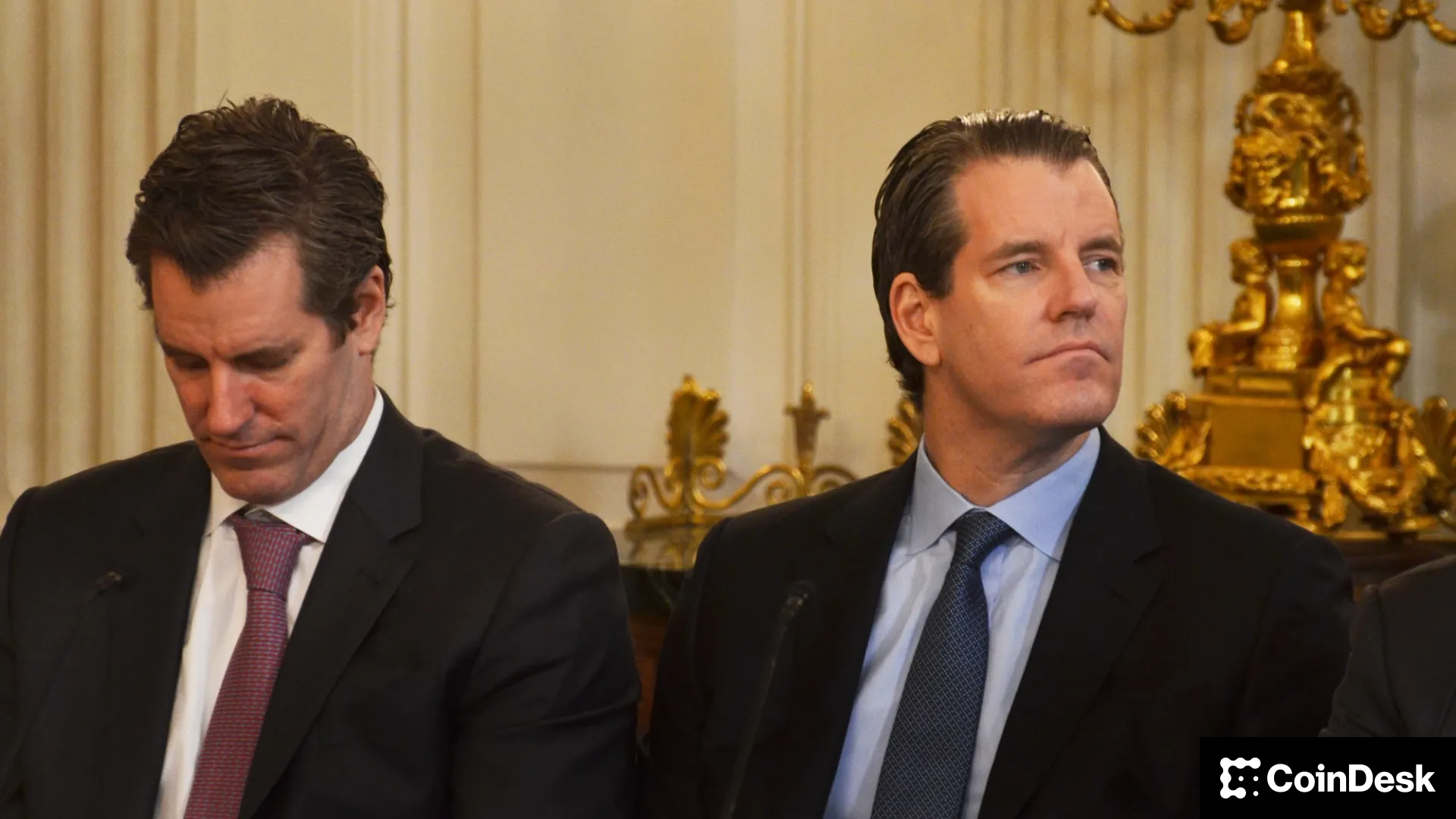Uncategorized
Crypto Daybook Americas: Bitcoin Buoyant With Trump Tariffs, Options Expiry Set to Add Volatility

By James Van Straten (All times ET unless indicated otherwise)
Risk-assets have a spring in their step. Bitcoin (BTC) is trading above $87,000 and the S&P 500 reclaimed its 200-day moving average for the first time since March 10.
However, volatility is expected to rise ahead of Friday’s quarterly options expiry, with over $12 billion in notional value set to expire on Deribit with a max pain price at $85,000. Most open interest, meantime, centers around $100,000 call options.
President Trump is deploying new trade war tactics, introducing “secondary tariffs” that could impose a 25% levy on any nation buying oil and gas from Venezuela, according to Bloomberg.
He also signaled that while some countries may receive exemptions on tariffs, additional tariffs on autos, lumber and semiconductor chips will be announced in the coming days. These measures, part of the president’s broader “America First” economic agenda, could take effect as early as April 2.
Bloomberg notes that Treasury Secretary Scott Bessent continues to advocate for tariffs, framing them as a strategic tool that serves multiple purposes: providing leverage in negotiations, generating government revenue and rebalancing trade in favor of the U.S.
Meanwhile, in the U.K., Chancellor Rachel Reeves is preparing for Wednesday’s Spring Statement amid rising bond yields that threaten to complicate fiscal planning. Early reports indicate she will propose civil service job cuts while ruling out further tax increases. Stay Alert!
What to Watch
Crypto:
March 25: The Mimir upgrade goes live on Chromia (CHR) mainnet.
March 25, 11:00 p.m.: Celo (CELO) mainnet’s hard fork network upgrade at block height 31056500 transitions it from an L1 to an Ethereum L2.
March 26: Circle’s stablecoin, USDC, starts trading on Japan-based crypto exchange SBI VC Trade.
March 26, 3:00 a.m.: Cronos (CRO) zkEVM v26 mainnet upgrade introduces Smart Account SSO for simpler logins and lays groundwork for the ZK Gateway to enhance cross-chain interoperability.
March 26, 10:37 a.m.: Ethereum’s Hoodi testnet will activate the Pectra hard fork network upgrade at epoch 2048.
March 27: Walrus (WAL) mainnet goes live.
April 1: Metaplanet (TYO: 3350) 10-for-1 stock split becomes effective.
Macro
March 26, 3:00 a.m.: The U.K.’s Office for National Statistics releases February consumer price inflation data.
Core Inflation Rate MoM Est. 0.5% vs. Prev. -0.4%
Core Inflation Rate YoY Est. 3.6% vs. Prev. 3.7%
Inflation Rate MoM Est. 0.5% vs. Prev. -0.1%
Inflation Rate YoY Est. 2.9% vs. Prev. 3%
March 26: The U.K.’s Office for Budget Responsibility (OBR) releases its latest Fiscal and Economic Outlook. Later in the day, the Chancellor of the Exchequer will present her Spring Statement to the House of Commons.
March 27, 8:30 a.m.: The U.S. Bureau of Economic Analysis releases (Final) Q4 GDP data.
GDP Growth Rate QoQ Est. 2.3% vs. Prev. 3.1%
Core PCE Prices QoQ Est. 2.7% vs. Prev. 2.2%
PCE Prices QoQ Est. 2.4% vs. Prev. 1.5%
Real Consumer Spending QoQ Est. 4.2% vs. Prev. 3.7%
March 27, 8:30 a.m.: The U.S. Department of Labor releases unemployment insurance data for the week ended March 22.
Initial Jobless Claims Est. 225K vs. Prev. 223K
March 27, 10:00 a.m.: The U.S. Senate Banking Committee will hold a hearing on the nomination of Paul Atkins to the chair of the U.S. Securities and Exchange Commission (SEC). Livesteam link.
March 27, 3:00 p.m.: Mexico’s central bank announces its interest rate decision.
Target Rate Est. 9% vs. Prev. 9.5%
April 2, 12:01 a.m.: The Trump administration’s reciprocal tariffs plan goes live.
Earnings (Estimates based on FactSet data)
March 27: KULR Technology Group (KULR), post-market, $-0.02
March 28: Galaxy Digital Holdings (GLXY), pre-market, C$0.38
Token Events
Governance votes & calls
Uniswap DAO is discussing the recognition of the canonical deployment of Uniswap v2 and v3 on Soneium.
Floki DAO is voting on removing the 0.3% transaction fee charged when users buy or sell thought the TokenFi smart contract following a request from a “very important and strategically significant partner.”
Sky DAO is discussing redirecting the Boost program’s budget to promote USDS on non-Ethereum networks and stop Sky token buybacks to instead direct surplus toward Sky takers.
March 26, 1 p.m.: Livepeer (LPT) to hold an Open Ecosystem Call.
Unlocks
March 31: Optimism (OP) to unlock 1.93% of its circulating supply worth $28.47 million.
April 1: Sui (SUI) to unlock 2.03% of its circulating supply worth $154.07 million.
April 1: ZetaChain (ZETA) to unlock 6.05% of its circulating supply worth $13.43 million.
April 3: Wormhole (W) to unlock 47.64% of its circulating supply worth $141.11 million.
April 7: Kaspa (KAS) to unlock 0.59% of its circulating supply worth $11.82 million.
April 9: Movement (MOVE) to unlock 2.04% of its circulating supply worth $22.82 million.
Token Listings
March 25: Particle Network (PARTI) to list on Binance, Gate.io, OKX, KuCoin, HashKey, Bitrue, Bitget, XT.com and others.
March 27: Walrus (WAL) to list on Gate.io and Bybit.
March 28: Binance to delist Aergo (AERGO).
March 31: Binance to delist USDT, FDUSD, TUSD, USDP, DAI, AEUR, UST, USTC, and PAXG.
Conferences
CoinDesk’s Consensus is taking place in Toronto on May 14-16. Use code DAYBOOK and save 15% on passes.
Day 2 of 3: Merge Buenos Aires
Day 1 of 2: PAY360 2025 (London)
Day 1 of 3: Mining Disrupt (Fort Lauderdale, Fla.)
Day 1 of 4: Boao Forum for Asia (BFA) Annual Conference 2025 (Boao, China)
March 26: Crypto Assets Conference (Frankfurt)
March 26: DC Blockchain Summit 2025 (Washington)
March 26-28: Real World Crypto Symposium 2025 (Sofia, Bulgaria)
March 27: Building Blocks (Tel Aviv)
March 27: Digital Euro Conference 2025 (Frankfurt)
March 27: Web3 Banking Symposium 2.0 (Lugano, Switzerland)
March 27: WIKI Finance EXPO Hong Kong 2025
March 27-28: Money Motion 2025 (Zagreb, Croatia)
Token Talk
By Shaurya Malwa
MOG jumped 25% as memecoins caught a bid on bitcoin and ether demand.
The cat-themed culture coin tends to surge whenever ETH sees buying demand, functioning as a «beta bet» on the Ethereum blockchain, where it is based.
Monitoring the highest performing memecoins during a market recovery can be profitable for traders, providing cues on which tokens tend to outperform when there are gains in major cryptocurrencies.
Cronos’ CRO caught flak from prominent on-chain sleuth ZachXBT after Trump Media signed a non-binding agreement with closely related Crypto.com to launch U.S. crypto exchange-traded funds (ETFs) for the token through Crypto.com’s broker-dealer, Foris Capital US.
“CRO is no different from a scam,” ZachXBT said in a tweet, referring to a governance proposal last week that increased CRO supply by more than 200%.
The contentious proposal drew to a close Monday last week, with the community voting in favor of increasing token supply from 30 billion CRO to 100 billion CRO over 10 years. The vote was influenced by a small group of large and influential token holders flipped the result with a 3.2 billion token swing just before the conclusion, drawing red flags among market watchers.
Derivatives Positioning
CME futures basis for BTC and ETH remains low, between 4% and 7%, indicating a lack of willingness among institutional players to deploy capital despite the recent market stability.
BTC perpetual funding rates dip below zero, hinting at a growing preference for bearish short positions on offshore exchanges.
XMR, HBAR, NEAR, BNB, SUI and AVAX boast positive 24-hour cumulative volume deltas in a sign of net buying in perpetual futures markets.
Short-dated BTC and ETH options listed on Deribit continue to show put skews. The $100K call remains the most popular option ahead of the quarterly expiry.
Market Movements:
BTC is down 1.12% from 4 p.m. ET Monday at $86,889.75 (24hrs: -0.77%)
ETH is down 1.01% at $2,064.85 (24hrs: -1.31%)
CoinDesk 20 is down 0.35% at 2,782.83 (24hrs: -0.55%)
Ether CESR Composite Staking Rate is up 6 bps at 2.97%
BTC funding rate is at -0.003% (-1.141% annualized) on Binance
DXY is unchanged at 104.24
Gold is up 0.38% at $3,024.40/oz
Silver is up 1.38% at $33.72/oz
Nikkei 225 closed +0.46% at 37,780.54
Hang Seng closed -2.35% at 23,344.25
FTSE is up 0.4% at 8,672.92
Euro Stoxx 50 is up 0.52% at 5,444.05
DJIA closed on Monday +1.42 at 42,583.32
S&P 500 closed +1.76 at 5,767.57
Nasdaq closed +2.27% at 18,188.59
S&P/TSX Composite Index closed +1.34% at 25,304.10
S&P 40 Latin America closed -0.62% at 2,455.50
U.S. 10-year Treasury rate is up 1 bps at 4.36%
E-mini S&P 500 futures are down 0.18% at 5,804.75
E-mini Nasdaq-100 futures are down 0.33% at 20,307.25
E-mini Dow Jones Industrial Average Index futures are down 0.15% at 42,833.00
Bitcoin Stats:
BTC Dominance: 61.44 (-0.20%)
Ethereum to bitcoin ratio: 0.02375 (-0.17%)
Hashrate (seven-day moving average): 829 EH/s
Hashprice (spot): $49.32
Total Fees: 6.17 BTC / $540,108
CME Futures Open Interest: 146,560 BTC
BTC priced in gold: 28.8 oz
BTC vs gold market cap: 8.19%
Technical Analysis

Bitcoin is rising toward the trendline that characterizes the sharp price drop from record highs.
A move through the trendline resistance would open doors to resistance at $100K, followed by record highs.
The strengthening of the upward momentum, signaled by the rising MACD histogram, favors the trendline breakout.
Crypto Equities
Strategy (MSTR): closed on Monday at $335.72 (+10.43%), down 0.94% at $332.58 in pre-market
Coinbase Global (COIN): closed at $203.04 (+6.94%), down 1.11% at $200.79
Galaxy Digital Holdings (GLXY): closed at C$19.30 (+7.58%)
MARA Holdings (MARA): closed at $14.61 (+18.01%), down 1.71% at $14.36
Riot Platforms (RIOT): closed at $8.72 (+9.69%), down 0.8% at $8.65
Core Scientific (CORZ): closed at $9.31 (+9.4%), down 0.97% at $9.22
CleanSpark (CLSK): closed at $8.79 (+18.15%), down 1.48% at $8.66
CoinShares Valkyrie Bitcoin Miners ETF (WGMI): closed at $16.31 (+10.2%)
Semler Scientific (SMLR): closed at $42.88 (+9.33%)
Exodus Movement (EXOD): closed at $52.64 (+6.3%), up 3.84% at $54.66
ETF Flows
Spot BTC ETFs:
Daily net flow: $84.2 million
Cumulative net flows: $36.22 billion
Total BTC holdings ~ 1,117 million.
Spot ETH ETFs
Daily net flow: $0 million
Cumulative net flows: $2.43 billion
Total ETH holdings ~ 3.419 million.
Source: Farside Investors
Overnight Flows

Chart of the Day

The chart shows the impact of the Ethereum Foundation’s ether sales on the token’s spot-market price.
Sales in excess of 15,000 ETH tend to move prices.
While You Were Sleeping
BlackRock to List Bitcoin ETP in Europe in First Crypto Foray Outside U.S. (CoinDesk): The asset management giant’s iShares Bitcoin ETP listed Tuesday on Xetra, Euronext Paris and Amsterdam with a 0.15% fee through year-end.
Binance Wallet Suspends Staff Member Over Front-Running Allegations (CoinDesk): The staffer allegedly used confidential information from their previous business development role at BNB Chain to front-run a token launch. Binance’s investigation found no evidence of insider trading.
Circle to Launch USDC in Japan on March 26 With SBI Partnership (CoinDesk): Japan-based crypto exchange SBI VC Trade, which got regulatory approval on March 4 to list USDC, will start trading of the stablecoin on March 26.
China Is Suffering Its Own ‘China Shock’ (Financial Times): China has lost 7.4 million factory jobs since 2011 as rising wages and lower-cost rivals like Vietnam and Indonesia erode its export edge, fueling concern over a rise in long-term unemployment.
China’s Vice Premier Meets Blackstone Chairman in Beijing (Reuters): He Lifeng said his country welcomed more U.S.-funded enterprises and long-term capital, which he said would contribute to the healthy development of U.S.–China economic relations.
Boom in Uranium Stocks Fizzles as Ukraine Ceasefire Talks Build (Bloomberg): Uranium-related stocks have fallen in 2025 amid prospects of new U.S. tariffs on Canada and looser Russian sanctions, both major sources of the nuclear fuel.
In the Ether






Business
Crypto Trading Firm Keyrock Buys Luxembourg’s Turing Capital in Asset Management Push

Crypto trading firm Keyrock said it’s expanding into asset and wealth management by acquiring Turing Capital, a Luxembourg-registered alternative investment fund manager.
The deal, announced on Tuesday, marks the launch of Keyrock’s Asset and Wealth Management division, a new business unit dedicated to institutional clients and private investors.
Keyrock, founded in Brussels, Belgium and best known for its work in market making, options and OTC trading, said it will fold Turing Capital’s investment strategies and Luxembourg fund management structure into its wider platform. The division will be led by Turing Capital co-founder Jorge Schnura, who joins Keyrock’s executive committee as president of the unit.
The company said the expansion will allow it to provide services across the full lifecycle of digital assets, from liquidity provision to long-term investment strategies. «In the near future, all assets will live onchain,» Schnura said, noting that the merger positions the group to capture opportunities as traditional financial products migrate to blockchain rails.
Keyrock has also applied for regulatory approval under the EU’s crypto framework MiCA through a filing with Liechtenstein’s financial regulator. If approved, the firm plans to offer portfolio management and advisory services, aiming to compete directly with traditional asset managers as well as crypto-native players.
«Today’s launch sets the stage for our longer-term ambition: bringing asset management on-chain in a way that truly meets institutional standards,» Keyrock CSO Juan David Mendieta said in a statement.
Read more: Stablecoin Payments Projected to Top $1T Annually by 2030, Market Maker Keyrock Says
Business
Crypto Trading Firm Keyrock Buys Luxembourg’s Turing Capital in Asset Management Push

Crypto trading firm Keyrock said it’s expanding into asset and wealth management by acquiring Turing Capital, a Luxembourg-registered alternative investment fund manager.
The deal, announced on Tuesday, marks the launch of Keyrock’s Asset and Wealth Management division, a new business unit dedicated to institutional clients and private investors.
Keyrock, founded in Brussels, Belgium and best known for its work in market making, options and OTC trading, said it will fold Turing Capital’s investment strategies and Luxembourg fund management structure into its wider platform. The division will be led by Turing Capital co-founder Jorge Schnura, who joins Keyrock’s executive committee as president of the unit.
The company said the expansion will allow it to provide services across the full lifecycle of digital assets, from liquidity provision to long-term investment strategies. «In the near future, all assets will live onchain,» Schnura said, noting that the merger positions the group to capture opportunities as traditional financial products migrate to blockchain rails.
Keyrock has also applied for regulatory approval under the EU’s crypto framework MiCA through a filing with Liechtenstein’s financial regulator. If approved, the firm plans to offer portfolio management and advisory services, aiming to compete directly with traditional asset managers as well as crypto-native players.
«Today’s launch sets the stage for our longer-term ambition: bringing asset management on-chain in a way that truly meets institutional standards,» Keyrock CSO Juan David Mendieta said in a statement.
Read more: Stablecoin Payments Projected to Top $1T Annually by 2030, Market Maker Keyrock Says
Business
Gemini Shares Slide 6%, Extending Post-IPO Slump to 24%

Gemini Space Station (GEMI), the crypto exchange founded by Cameron and Tyler Winklevoss, has seen its shares tumble by more than 20% since listing on the Nasdaq last Friday.
The stock is down around 6% on Tuesday, trading at $30.42, and has dropped nearly 24% over the past week. The sharp decline follows an initial surge after the company raised $425 million in its IPO, pricing shares at $28 and valuing the firm at $3.3 billion before trading began.
On its first day, GEMI spiked to $45.89 before closing at $32 — a 14% premium to its offer price. But since hitting that high, shares have plunged more than 34%, erasing most of the early enthusiasm from public market investors.
The broader crypto equity market has remained more stable. Coinbase (COIN), the largest U.S. crypto exchange, is flat over the past week. Robinhood (HOOD), which derives part of its revenue from crypto, is down 3%. Token issuer Circle (CRCL), on the other hand, is up 13% over the same period.
Part of the pressure on Gemini’s stock may stem from its financials. The company posted a $283 million net loss in the first half of 2025, following a $159 million loss in all of 2024. Despite raising fresh capital, the numbers suggest the business is still far from turning a profit.
Compass Point analyst Ed Engel noted that GEMI is currently trading at 26 times its annualized first-half revenue. That multiple — often used to gauge whether a stock is expensive — means investors are paying 26 dollars for every dollar the company is expected to generate in sales this year. For a loss-making company in a volatile sector, that’s a steep price, and could be fueling investor skepticism.
-

 Business11 месяцев ago
Business11 месяцев ago3 Ways to make your business presentation more relatable
-

 Fashion11 месяцев ago
Fashion11 месяцев agoAccording to Dior Couture, this taboo fashion accessory is back
-

 Entertainment11 месяцев ago
Entertainment11 месяцев ago10 Artists who retired from music and made a comeback
-

 Entertainment11 месяцев ago
Entertainment11 месяцев ago\’Better Call Saul\’ has been renewed for a fourth season
-

 Entertainment11 месяцев ago
Entertainment11 месяцев agoNew Season 8 Walking Dead trailer flashes forward in time
-

 Business11 месяцев ago
Business11 месяцев ago15 Habits that could be hurting your business relationships
-

 Entertainment11 месяцев ago
Entertainment11 месяцев agoMeet Superman\’s grandfather in new trailer for Krypton
-

 Entertainment11 месяцев ago
Entertainment11 месяцев agoDisney\’s live-action Aladdin finally finds its stars




